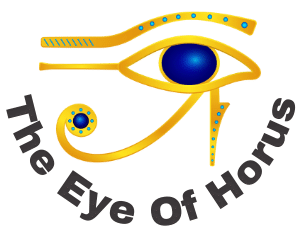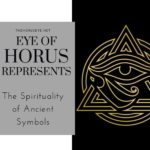Ancient Egyptians used a sign known as the Greek Eye of Horus to represent the goddess Wadjet, who was considered to be the Pharaohs’ helper and protector. Around 3000 BC is when the symbol is thought to have first appeared.
The Eye of Horus, also known as the Wadjet or Udjat, is an ancient Egyptian symbol of protection and healing. It is often depicted as a stylized eye with markings that correspond to parts of the eye and body in Egyptian mythology.
In this mythology, the god Horus was said to have lost his eye in a battle with the god Set. His mother, the goddess Isis, was able to heal the eye and return it to Horus, who then offered it to the god of the underworld, Osiris, as a symbol of protection and resurrection.
The Eye of Horus became a powerful symbol of protection and healing and was often used in amulets and other forms of jewelry. The eye is often depicted with six parts, each of which corresponds to different parts of the body: the iris and pupil represent the eye, the eyebrow represents the nose, the curved line represents the mouth, the triangular shape represents the ear, and the two lines on the side represent the legs.
The Eye of Horus is also associated with mathematics, as the six parts of the eye are said to correspond to the six fractions used to calculate the sacred cubit measurement in ancient Egypt.
Ancient Egyptian and Greek Mythology
Ancient Egyptian mythology and Greek mythology are two distinct cultures with unique beliefs, gods, and stories. However, there are some similarities and overlaps between the two.
In Ancient Egyptian mythology, the gods were seen as powerful beings who controlled various aspects of life, such as the sun, the moon, the river Nile, and agriculture. The gods were also believed to have the power to intervene in human affairs, and offerings and sacrifices were made to them in order to gain their favor.
In Greek mythology, the gods were seen as immortal beings who lived on Mount Olympus and controlled various aspects of life, such as the weather, love, and wisdom. The gods were often depicted as having human-like emotions and could interfere in human affairs, either helping or hindering people.
Both cultures had creation myths, with the Egyptians believing that the god Atum created the world and the Greeks believed that the gods created the world from chaos. Both cultures also had a belief in an afterlife, with the Egyptians having a highly elaborate system of beliefs and rituals related to the afterlife, and the Greeks believed in an underworld ruled by the god Hades.
Finally, both cultures had epic tales and legends, such as the Egyptian story of the god Horus and the Greek story of the Trojan War. These stories continue to influence and inspire people around the world today.
What is the Egyptian Symbol of the Afterlife?
The Egyptian symbol of the afterlife is the Ankh. The Ankh is an ancient Egyptian symbol that represents life, eternal life, and the afterlife. It is depicted as a cross with a loop at the top, which is said to symbolize the life-giving powers of the sun. The Ankh was a powerful symbol for the ancient Egyptians and was often depicted in art and artifacts related to the afterlife, such as sarcophagi and tomb paintings.
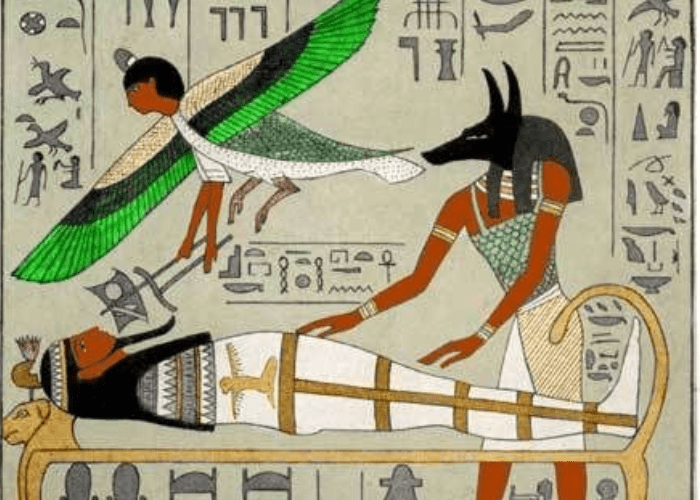
In ancient Egyptian belief, the Ankh was seen as a key that could open the doors to the afterlife and provide access to eternal life. It was also seen as a symbol of the life-giving powers of the gods and was often depicted as being held by gods and pharaohs as a symbol of their power and authority.
Today, the Ankh continues to be a popular symbol of ancient Egypt and is often used in jewelry and other forms of decorative art. It remains a powerful symbol of life, renewal, and the afterlife, and continues to inspire people around the world.
Ancient Egyptian Culture, Is the Greek Eye of Horus.
The Eye of Horus and the Ankh are both symbols that are associated with Ancient Egyptian culture, but they are not the same thing. The Eye of Horus is a symbol of protection and healing and is associated with the ancient Egyptian god Horus.
It was often depicted as a stylized eye with markings that correspond to parts of the eye and body in Egyptian mythology. The Ankh, on the other hand, is a symbol of life and the afterlife and is depicted as a cross with a loop at the top. It was seen as a key that could open the doors to the afterlife and provide access to eternal life.
So, while both symbols are associated with Ancient Egyptian culture, they are distinct symbols that represent different beliefs and ideas.
Egyptian Lore: A Snapshot of What Ancient Egyptians Believed
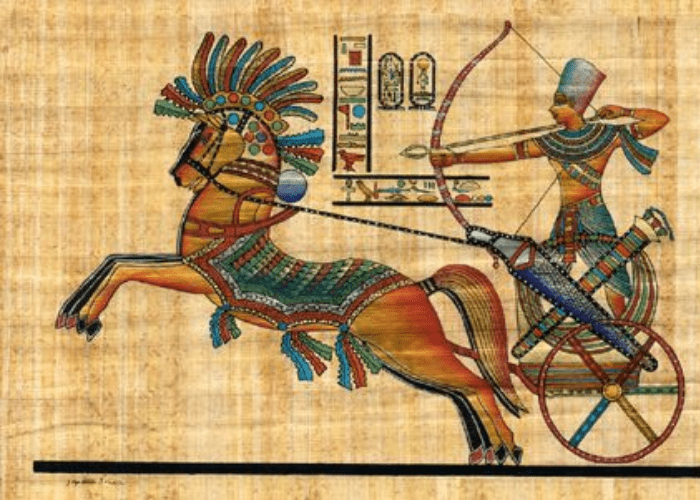
Ancient Egyptian lore was a complex and intricate system of beliefs and practices that shaped the lives of the Ancient Egyptians. Here are some of the key elements of Egyptian lore:
- Gods and goddesses: Ancient Egyptians believed in a pantheon of gods and goddesses who controlled various aspects of life, such as the sun, the moon, the river Nile, agriculture, and more. The gods were often depicted as having human-like emotions and could intervene in human affairs.
- Creation myth: The Ancient Egyptians believed that the god Atum created the world. This creation myth served as a foundation for their beliefs about the world and their place in it.
- Afterlife: Ancient Egyptians believed in an afterlife, and put a great deal of effort into preparing for it. They believed that the deceased had to pass through a series of trials and tests in the afterlife in order to reach the final resting place.
- Magic and ritual: Ancient Egyptians believed in the power of magic and ritual to influence the world around them. They practiced various forms of magic, such as spells and incantations, and performed rituals to gain the favor of the gods and protect themselves from harm.
- Role of the pharaoh: The pharaoh was seen as a divine ruler, and was believed to have a direct connection to the gods. He was responsible for maintaining order in the world and ensuring that the gods were propitiated.
These are just a few examples of the key beliefs and practices that shaped Ancient Egyptian culture. The study of Ancient Egyptian lore continues to be a fascinating and rewarding field of study, as it offers a glimpse into a rich and complex culture that has greatly influenced our world.
Can the Greek Eye of Horus Bring Happiness and Good Fortune?
The Eye of Horus is a symbol that is associated with good fortune and protection in Ancient Egyptian culture. However, whether or not it can bring happiness and good fortune to an individual is a matter of personal belief.
In Ancient Egyptian culture, the Eye of Horus was seen as a symbol of protection and healing and was believed to offer its wearer protection from harm and illness. It was also associated with the god Horus, who was seen as a powerful and benevolent deity.
However, whether or not the Eye of Horus can bring happiness and good fortune to an individual is a matter of personal belief and interpretation. Some people may believe that wearing or displaying the symbol can bring good fortune and protection, while others may not see it as having any significant impact on their lives.
In the end, the meaning and impact of symbols like the Eye of Horus are shaped by the beliefs and cultural practices of the people who use them. So, whether or not the Eye of Horus can bring happiness and good fortune is ultimately up to the individual who wears or displays it.
Ancient Egyptian Symbolism: The Creative Section of the Eye
The Eye of Horus is a powerful symbol in Ancient Egyptian culture, and each section of the eye is associated with a specific aspect of the world and human experience.
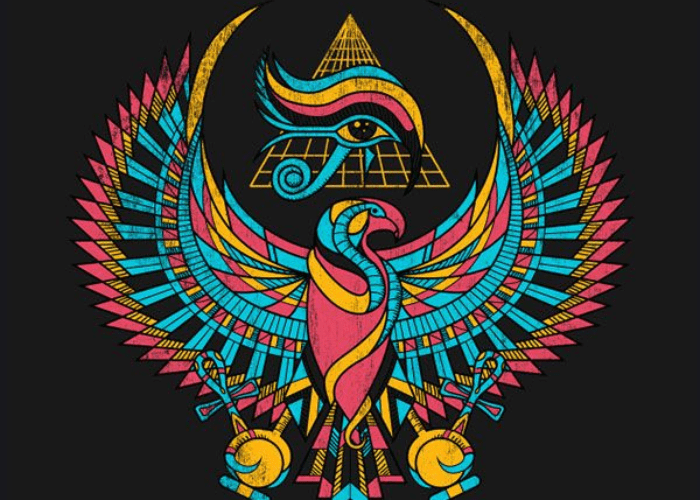
The Eye of Horus is a powerful symbol in Ancient Egyptian culture, and each section of the eye is associated with a specific aspect of the world and human experience. Here are the different sections of the Eye of Horus and the meanings associated with them:
- The eyebrow: The eyebrow represents the sense of hearing.
- The Iris: The iris represents the sense of touch.
- The pupil: The pupil represents the sense of sight.
- The upper eyelid: The upper eyelid represents the sense of smell.
- The lower eyelid: The lower eyelid represents the sense of taste.
These five sections of the Eye of Horus are said to represent the five senses and the ability of the individual to experience the world and all its wonders.
The Eye of Horus was also seen as a symbol of protection and healing and was believed to offer its wearer protection from harm and illness. This idea of protection and healing is tied to the story of the god Horus, who lost his eye in a battle with the god Seth and had it restored by the goddess Hathor.
In this way, the Eye of Horus is a symbol of the power of the individual to overcome adversity and find balance and healing in the world. It is a powerful symbol of creativity, protection, and the ability to experience life to the fullest.
An Overview of the Greek Eye of Horus: The Ancient Egyptian Symbol
The Eye of Horus, also known as the Wadjet Eye, is an ancient Egyptian symbol of protection, health, and wisdom. It is one of the most recognizable symbols from ancient Egyptian culture and is often associated with the god Horus.
The Eye of Horus is usually depicted as a stylized eye with markings that correspond to parts of the eye and body in Egyptian mythology. The markings on the eye represent the fractional parts of the eye that were restored to the god Horus after he lost it in a battle with the god Seth.
In Ancient Egyptian culture, the Eye of Horus was believed to have healing powers and was often used as a talisman to protect against illness and harm. It was also seen as a symbol of the balance of the universe and was used to represent the idea of a healthy and harmonious world.
In addition to its use as a symbol of protection and healing, the Eye of Horus was also associated with the idea of an afterlife and was thought to be a key that could open the doors to the afterlife and provide access to eternal life.
The Eye of Horus continues to be an important symbol in modern Egyptian culture and is often used in jewelry, tattoos, and other forms of art and decoration. It is a powerful symbol of ancient Egyptian beliefs and practices and is a reminder of the rich cultural heritage of the region.
Ophthalmology Greek Gods and Ancient Greece
Each people’s mythology serves as the foundation for their history. Greek mythology has surpassed numerous limitations of time and location among the diverse myths produced by various peoples. Greek myths were widely circulated by the Romans because they are timeless and anthropocentric, placing man at the center.
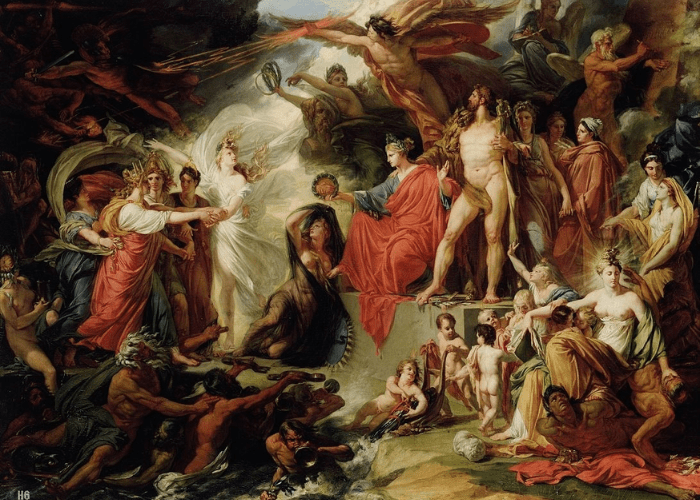
Ophthalmology, the study of the anatomy and diseases of the eye, has roots in Ancient Greece. The Greeks were known for their contributions to medicine and science, and ophthalmology was no exception.
In Ancient Greece, the god of medicine, Asclepius, was believed to have the ability to heal any illness, including eye diseases. People would visit his temple to seek treatment for their eye problems, and the temple was considered a center of medical learning.
The Greek philosopher and physician, Hippocrates, is considered the father of modern medicine and made significant contributions to ophthalmology. He wrote the Hippocratic Corpus, a collection of medical texts, which included a section on eye diseases. This section discussed the anatomy of the eye, the causes of eye diseases, and the treatment of eye problems.
The Greek physician Galen also made important contributions to ophthalmology. He wrote extensively on the anatomy and function of the eye and described the use of couching, a surgical technique used to treat cataracts.
Overall, the Greeks played a crucial role in the development of ophthalmology and the study of the eye. Their ideas and techniques laid the foundation for modern ophthalmology and helped to advance the field in new and important ways.
In Greek Mythology, Spirits
Greek mythology frequently refers to spirits as “daemons,” denoting their transient nature. Greek term daemon translates to “without a master” in English. A demon has no master; rather, it has its own goals and aspirations.
Greek mythology has two distinct sorts of spirits: spirits of the dead and spirits of nature. Ghosts, shadows, and apparitions are all types of deceased people’s spirits. While shadows are thought of as neutral creatures, ghosts are frequently perceived as malicious spirits. When a person dies or becomes unwell, friendly spirits frequently appear to them in dreams or visions. Animals, plants, and even natural substances like water and air are considered to be spirits of nature.
Depending on the circumstances, these spirits may be benevolent, neutral, or hostile. Greek mythology has a wide variety of spirits, some of whom are more closely related to the natural world than others. Although the gods are complicated and enigmatic, they exist because people have a strong bond with nature and its cycles. This explains why the gods and their relationships with people figure prominently in many stories.
Greek Mythology Separates Its Spirits Frequently Into Categories.
The most potent of these deities are frequently equated with nature. Particularly, the Titans stand in for the natural disasters and stress that threaten humanity, like earthquakes, volcanoes, and lightning. They just exist as a part of a broader cycle of death and rebirth; they are not always harmful or destructive.
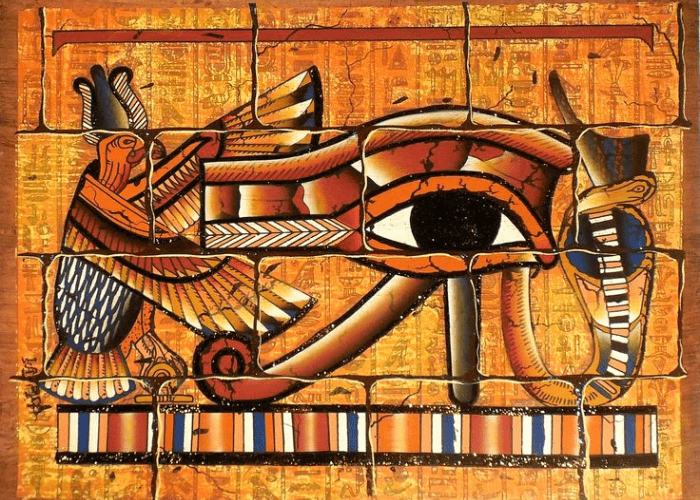
Greek mythology often divides its spirits into two groups: those that people can see or hear (like the Muses) and those that they cannot (e.g., the Furies). While these two groups do share some traits, such as the fact that all spirits are unseen to mortals save in dreams, they do not always have the same abilities or objectives.
The Ghosts of the Dead Are Separated Into Three Categories in Greek Mythology:
1)Charites (Greek:) are the names given to the spirits of the deceased who had lived moral lives. Because they were thought to be able to soar to Mount Olympus, they are frequently depicted as attractive young ladies with wings.
2)The spirits of those who have led wicked lives are referred to as Eumenides (Greek: v). They were shown in artwork with human heads and animal bodies since it was thought that they took the shapes of birds and snakes.
3)Suicidal souls were not included in any category since they were unable to visit Earth again.
In the same way that plants and animals are a part of the natural world, so too were regarded to be the souls of the deceased. They were believed to be capable of damage even if they weren’t always bad, especially when people were unhappy or furious. Greek deities had a wide range of characteristics that represented the diverse roles they played in life.
They were generally gentle and caring toward living things, but they also possessed control over the natural world and had the authority to punish anybody who did not treat it with respect. Human conduct was the gods’ major concern, thus they frequently punished individuals by making them ill or by murdering them. However, the gods also sent healers to assist people to recover from illness or injury, protecting them from danger in addition to punishing individuals for bad behavior.
There Were Demons in Greek Mythology.
In ancient Greece, demons were worshipped as heavenly entities with superhuman skills, predetermined fates, and guardian spirits or angels who offered guidance and protection. Demons are rarely shown in Greek mythology or art because they are sensed rather than seen.
Daemon, a Greek term, is defined as a “divine spirit.” In Greek mythology, daemons were thought to be imperceptible entities that had a positive impact on people’s life most of the time rather than a negative one. A deity or God-like creature without a human form is also referred to as a daemon.
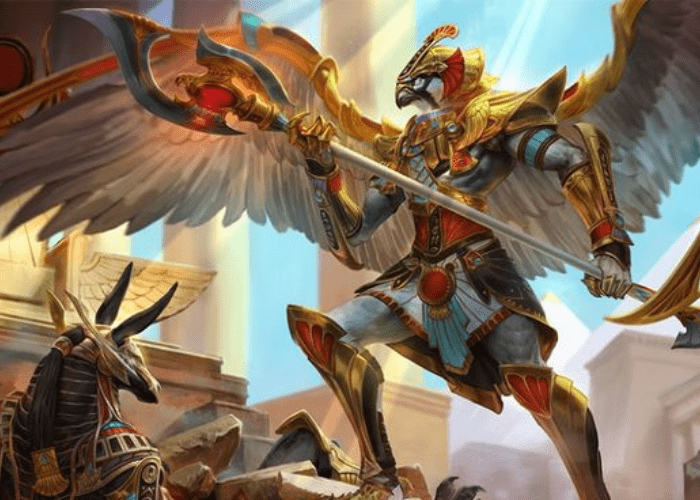
Daemons were divided into two categories in Greek mythology: those who were good and useful to people, and those that were evil or destructive. Prometheus, who gave men fire, is the most well-known illustration of a good daemon. Athena and Apollo are two additional good daemons. The most well-known illustrations of evil daemons are the gigantic serpents Typhon and Moloch (a priestess who sacrificed children).
In Greek Mythology, a Daemon
A daemon (also spelt “daimon” or “daimonion”) was a supernatural entity or spirit who served as a bridge between the gods and humans in Greek mythology. Despite not being immortal or all-powerful like gods, daemons were still thought of as strong, influential beings that had the potential to significantly impact human lives.
Daemons were frequently thought to embody or personify particular geographical phenomena, historical sites, or philosophical ideas. For instance, the daemon Pan was linked to nature, sexuality, and fertility, whereas the daemon Hades was linked to death and the underworld.
Daemons were sometimes seen as personal protectors or guiding spirits for people, and they were thought to provide security, motivation, and knowledge. The “daimonion” that Socrates spoke of was a voice he heard inside himself that directed his thoughts and deeds.
Overall, daemons were important in Greek mythology and religion. They were frequently thought of as strong, enigmatic spirits that had great control over human destiny.
Greek Mythology Eye of Horus
Actually, Egyptian mythology, not Greek mythology, is the source of the Eye of Horus.
The Eye of Horus, also known as the Wedjat Eye, was a potent representation of protection, healing, and regal authority in Egyptian mythology. It was first connected to the god Horus, who was frequently pictured with a falcon head and was revered as the sky and kingship god.
The Eye of Horus was frequently shown as a stylised human eye with distinguishing features that were believed to be a falcon’s eye marks. The image was frequently used as a protective amulet or shown as such in artwork because it was thought to have a calming effect.
The goddess Wadjet, who was occasionally shown as a snake with the Eye of Horus on her head, was also connected to the Eye of Horus in Egyptian mythology. Wadjet was frequently linked with kings and pharaohs and was thought to be a protecting deity.
Overall, the Eye of Horus was a potent representation of protection, healing, and regal authority in Egyptian mythology. It was not a part of Greek mythology, but as they were both a part of the larger cultural and religious environment of the ancient Mediterranean region, they did share some overlapping ideas and symbols.
The Beliefs Behind Protective Spirits
According to popular belief, protective spirits are unseen creatures or entities who shield people from harm, misfortune, and danger. They are occasionally both kind and malicious, depending on the situation (evil). It is believed that guardian spirits have unique control over nature itself, including healing and instructive abilities.
Hinduism is a religion that has its own legends regarding guardian spirits. Devas, the Sanskrit word for gods, is the name given to these ghosts. The marine mythology of Hinduism is rich in stories, myths, and legends. The protectors of all earthly life are the devas. Because they have always been fair and kind to everyone, God himself has granted them their position.
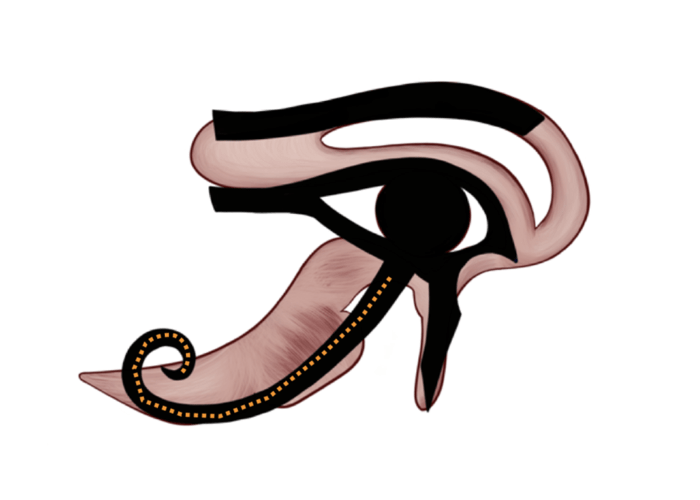
Other names for the devas are protector gods, nature gods, and nature spirits. They defend us against injury, illness, and bad entities like demons and the devil. In Sanskrit, the term “deva” also signifies “god.” These gods’ primary responsibility is to keep us safe both throughout our lifetime and after we pass away by directing us to either paradise or hell based on our actions during life.
Many civilizations hold the belief in benevolent spirits. In certain cultures, they are revered as beings who protect people and the things, they hold dear. They are not as strong in other cultures, but they still have a purpose.
Ancient Civilizations’ Spirituality and the Function of Spirit Guides
Humans have always felt the need to be shielded from danger by supernatural beings in various civilizations. A common misconception about spirits is that they may manifest as people and have a variety of negative effects on our life. Objects or persons may be the targets of protective spirits. This can entail turning something invisible or making it vanish.
Additionally, they may defend them against numerous threats, such as disease, harm, and even demise. Greek mythology describes Elysium as a happy afterlife for good men and heroes. The Greek Elysium, which was situated in the Olympian paradise of Olympus, was a lovely, fortunate location for unwinding, eating, and making love. It was guarded by the enormous Elysium (Greek: E), which had a walled perimeter (1,000 stadia) around it.
Elysian Fields: Meaning and Symbolism
Greek mythology also gives the name Elysium to a variety of locations, many of which bear their names, such as Elysium and Elysium Lake on Earth. Although the term “elysion” means “blessed” in its original sense, it has evolved to represent something superior to life on Earth: immortality.
It is occasionally used as a synonym for Tartarus or Hades. The Greek term for paradise, Elysium, alludes to the dwelling place of the blessed in Greek mythology. The Elysian Fields of Roman mythology is a similar idea.
According to Greek mythology, the lovely land of Elysium was located above the earth and was governed by the goddess Pallas Athena. Greece’s Elysian Fields, where the spirits of fallen heroes went after their deaths, were situated close to the island of Delos. According to certain versions of the narrative, heroes can only enter Elysium after completing their last job on Earth.
Are the Souls of Heroes Sent to Elysium?
Other versions of the narrative allow heroes who pass away fighting monsters or creatures that pose a threat to humanity to also reach Elysium. It is said that these souls are sent immediately to a subterranean cave where they spend all of the eternity sleeping and consuming food that Pallas Athena herself provides.
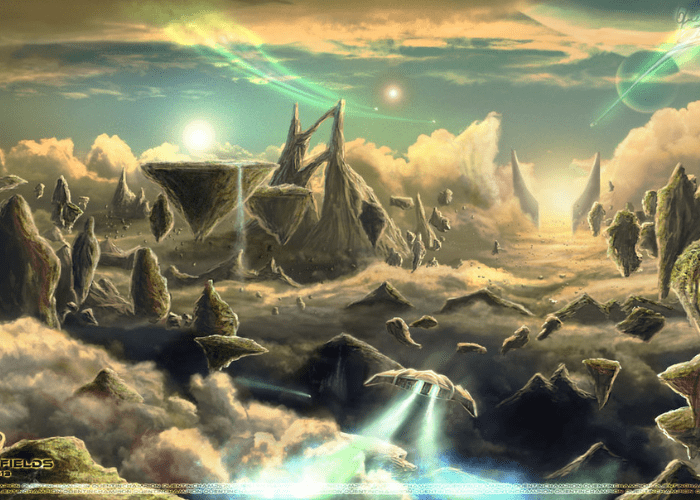
Elysium, according to the Greeks, was really divided into two distinct locations, one for people and one for animals. The human version was situated on earth, but it had a separate entrance that humans could use after passing away. This entrance was occasionally submerged.
The animal version was in heaven, above the atmosphere but underneath the surface of our globe, where there were also gods who lived more comfortably than people did on earth.
Conclusion
The Eye of Horus is a significant symbol in Egyptian mythology rather than Greek mythology. It was considered to have a protecting aura and to possess healing and regal power. It was connected to the god Horus and the goddess Wadjet. The Eye of Horus is a unique emblem from Egyptian mythology and is not directly related to Greek mythology, despite the fact that there are significant parallels and overlaps between Greek and Egyptian mythology, such as their common belief in supernatural creatures and their influence on human lives.
